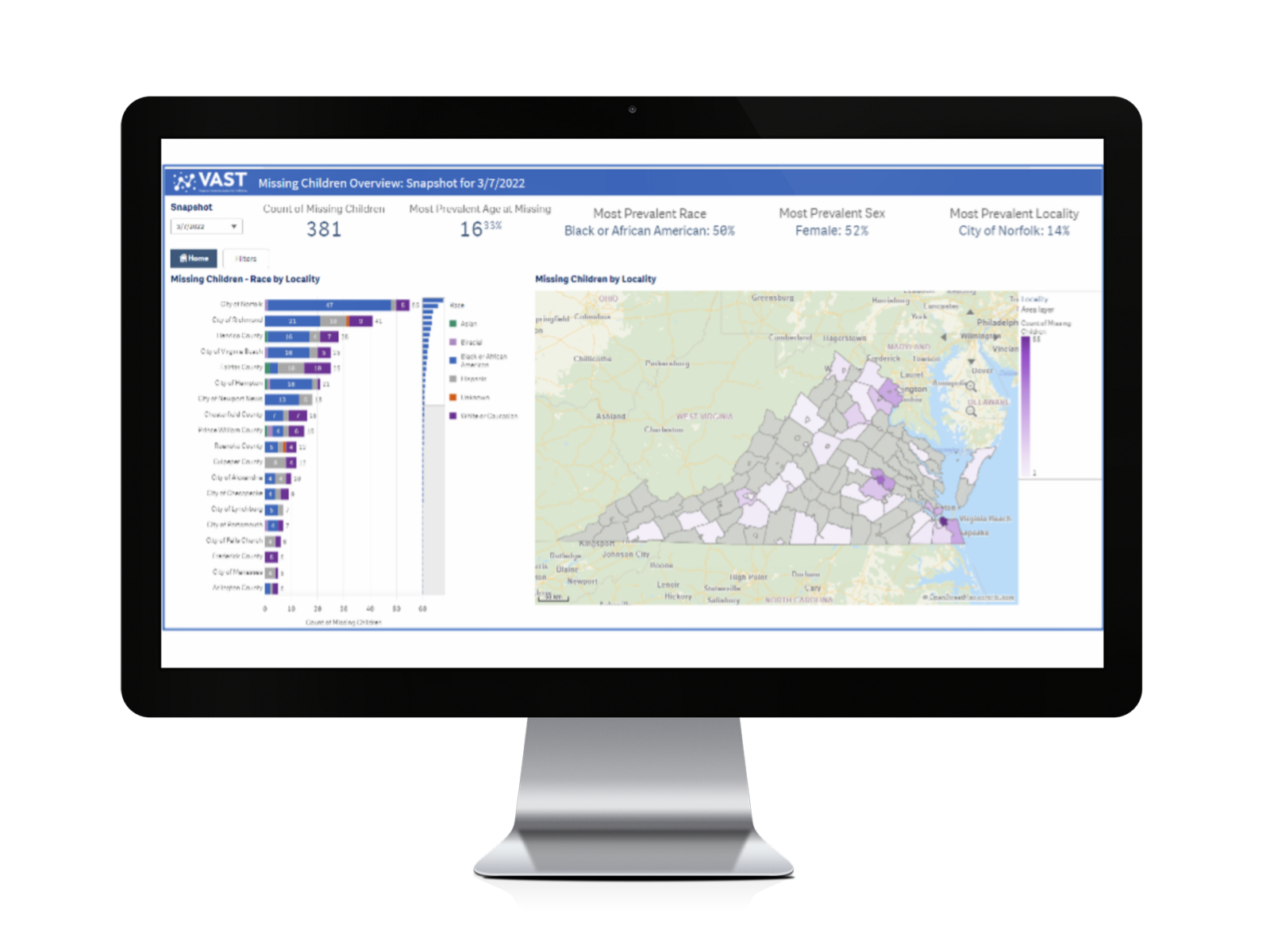Virginia’s Analytics System for Trafficking (VAST)
Virginia’s Analytics System for Trafficking (VAST)
Challenge
The highly decentralized nature of data related to human trafficking was preventing Virginia’s Department of Criminal Justice System (DCJS), as well as other stakeholders across the Commonwealth, from clearly understanding the trafficking landscape and creating data-driven strategies and services in response. DCJS needed a unified statewide data collection system for human trafficking in order to address this challenge and ensure strategic direction, services, and decisions about the allocation of state and local resources are as informed as possible.
Solution
Voyatek, created Virginia’s Analytics System for Human Trafficking (VAST), a comprehensive data collection and analytics system. VAST allows Virginia to capture accurate data about human trafficking and then analyze that information at a deeper level. Stakeholders can better understand the risk factors of human trafficking victims, the relationship between the perpetrator and victim, the demographics of the perpetrator and victim, the locations where the offenses occurred, and more. These insights inform a variety of decisions that include, but are not limited to, funding decisions, the deployment of investigative resources, the locations that need support in developing services, and the types of services that need to be improved or developed.



